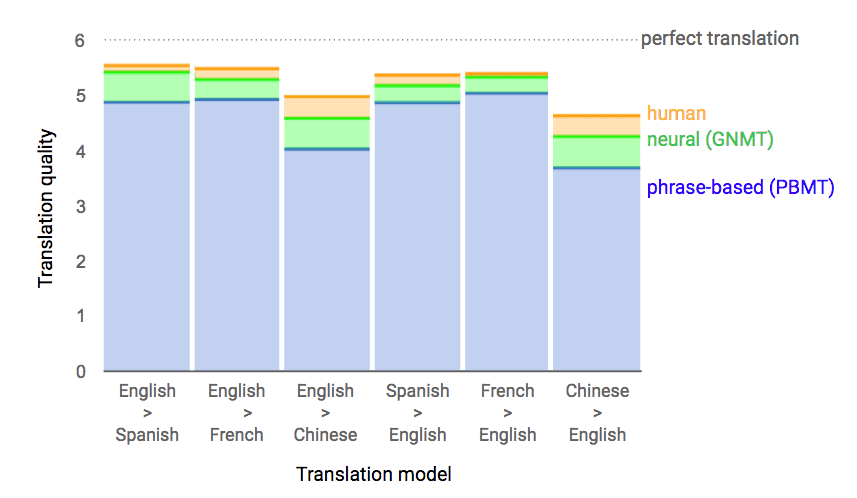Google Translate neural translations promise better results

Google Translate is a widely used translation service by Google that is probably the most used translation service on the Web these days.
Google states for instance that the system processes 18 million translations per day from Chinese to English alone.
Up until now, Google Translate used a phrase-based translation model to power the translation engine. This method breaks a sentence up into words and phrases, and translates them largely independently from each other.
Google's new method, called Google Neural Machine Translation system (GNMT) uses neural machine translation instead. One core difference between the two methods is that GNMT looks at the entire sentence as one unit for translation, and also how it fits in with the rest of the text (if there is more).
Google Translate neural translations

Google explains the technicalities behind the new translation method in the following way using Chinese sentence to English translation.
First, the network encodes the Chinese words as a list of vectors, where each vector represents the meaning of all words read so far (“Encoderâ€). Once the entire sentence is read, the decoder begins, generating the English sentence one word at a time (“Decoderâ€).
To generate the translated word at each step, the decoder pays attention to a weighted distribution over the encoded Chinese vectors most relevant to generate the English word.
To explain it in simple terms: Vectors are assigned to each word representing the meaning of words read so far. Once that process is done, the translated sentence is generated one word at a time using weighted distribution to find the most relevant translation for each word using those vectors.
Google states that GNMT reduces translation errors by up to 85% during tests using Wikipedia and news articles, and the help of bilingual human raters.
Google notes further that GNMT translations are closer to human translations than phrase-based translations.

Google Translate Chinese to English translations have been moved to GNMT already. This means that users who use Google Translate on the web or in apps will benefit from better results when they translate Chinese text to English.
Google promises that GNMT will be rolled out for additional language pairs over the coming months.






















Google Neural Machine Translation system (GNMT), a terminology to remember. No idea about Chinese but indeed some translations deliver odd results, some are even practically not understandable. GNMT is welcomed. A smile for us, French, who for the most of us have the greatest difficulties with foreign languages (even if it’s improving), a broad smile for pupils (and students!) who often have a hard work getting the translated text correctly presented when translated to French and a tougher one even when destination is English :)